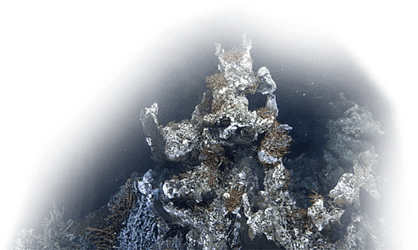“Through my practices during the fellowship, I have come to think of memory as something larger than the human; something geological, something ecological.”
2025 ONC ArtScience Fellow, Parvin Harsani.
When Parvin Hasani speaks about memory, she doesn't describe it as a fixed presence. Instead, she speaks of it like water—fluid, elusive, yet constantly shaping its surroundings. “Memory is intangible,” she says, “but it leaves traces in the body.”
In September 2025, those traces took on a sculptural form at her University of Victoria (UVic) exhibition, Tides of Memory: Mapping the Invisible Currents of the Body and Ocean; a new installation created during Parvin’s 2025 Ocean Networks Canada (ONC) ArtScience Fellowship: a partnership program co-led by the UVic’s Faculty of Fine Arts and ONC.
The Iranian interdisciplinary artist and Master’s student in UVic’s Visual Arts department spent four months studying the life, movement, and mineral processes occurring within and around hydrothermal vents—fractures in the Earth’s crust where superheated mineral-rich fluids flow into the ocean’s cold depths. Her collaboration with scientists enabled the translation of scientific data from ONC’s Endeavour study site into works of art.
“Scientific data gave me the language of [vent] formation and collapse, but art practice allowed me to interpret the knowledge,” she explains.
To visualize these ideas, Parvin employed a variety of methods, among them Scagliola, which builds up layers of plaster and pigments in intricate patterns, creating rich, textured surfaces. She paired this with electro-etching, a technique that uses electricity and chemical reactions to inscribe metal with patterns—manifesting the traces that time and environment leave on both the ocean floor and the human body.
The ONC ArtScience Fellowship program, now entering its seventh year, strengthens connections between art and science that broaden and cross-fertilize perspectives and critical discourse on today’s major issues, such as environment, technology, oceans, cultural and biodiversity, and healthy communities. It is open to all current UVic Fine Arts graduate students in any visual, written, musical or performance medium. This partnership program receives additional financial support from the UVic Faculty of Science.
The next annual call for artists will be in fall 2025.
